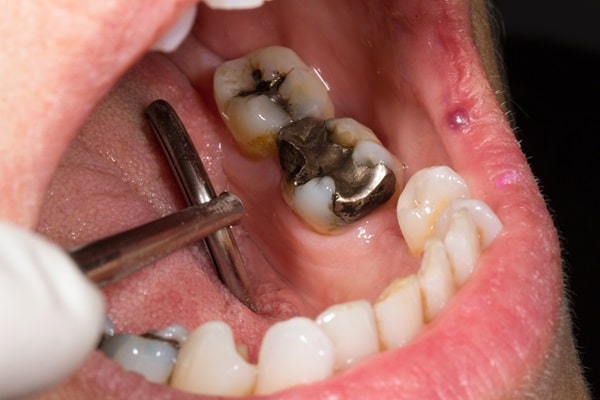What Types of Dental Filling Materials Options Do I Have?

The most important part of any filling is restoring the tooth. Afterward, it is important to make a decision that is based on appearance, functionality, longevity and even budget. With that in mind, we have listed various filling material types and the pros and cons of each.
Resin/tooth-colored fillings
Pros: Tooth-colored fillings are incredibly popular because they blend in with the natural tooth. Anyone who struggles with massive cavities or dental damage understands why this is so important. Having dental restorations that consist of silver makes the restorations much more obvious.
With tooth-colored resin, it is nearly impossible for patients to tell the difference. When a person smiles, it looks as though the teeth are perfectly healthy and natural. The natural appearance provides a healthy solution for both children and adults.
Cons: Fillings that consist of a resin composite are not going to last as long as some of the other filling materials. On average, composite fillings only last for seven to 10 years. This will make it necessary to replace the fillings at a future date. With children who are having fillings in their baby teeth, this does not matter because their teeth will fall out naturally. For adults who do not enjoy visiting the dentist, this can be a drawback and make it better to have a filling that is going to last longer.
Gold fillings
Pros: Gold fillings last the longest out of any filling material and can last up to 30 years, which is highly convenient for an adult who does not want to have to worry about it. Additionally, gold fillings blend in with the tooth structure far better than silver ones. While they are not as natural-looking as resin, the gold has a far nicer and more natural appearance than silver.
Cons: Gold is expensive. Gold fillings cost far more than any other type. However, since they also last two to three times longer, the upfront cost can be mitigated by the long-term savings.
Silver/amalgam fillings
Pros: Amalgam fillings are the least expensive type of filling material. They are highly durable, incredibly common and have been placed for decades. They do the job well and are known for their functionality.
Cons: They stand out and are obvious when placed in the mouth. Additionally, there have been conflicting studies done on the health impact of amalgam , so we encourage patients to conduct research and make a determination for themselves whether this is the solution they want to use.
Schedule a consultation
To find out "What type of dental filling materials options do I have" based on your tooth or budget, call and schedule an appointment with our clinic. We can make a detailed recommendation after conducting an examination and asking you a few questions.
[recent-blogs count=4 layout=”horizontal” category=”composite-fillings-cat,routine-dental-care-cat,routine-dental-procedures-cat,cosmetic-dental-care-cat,cosmetic-dental-services-cat,cosmetic-dentist-cat,dental-cosmetics-cat”]


